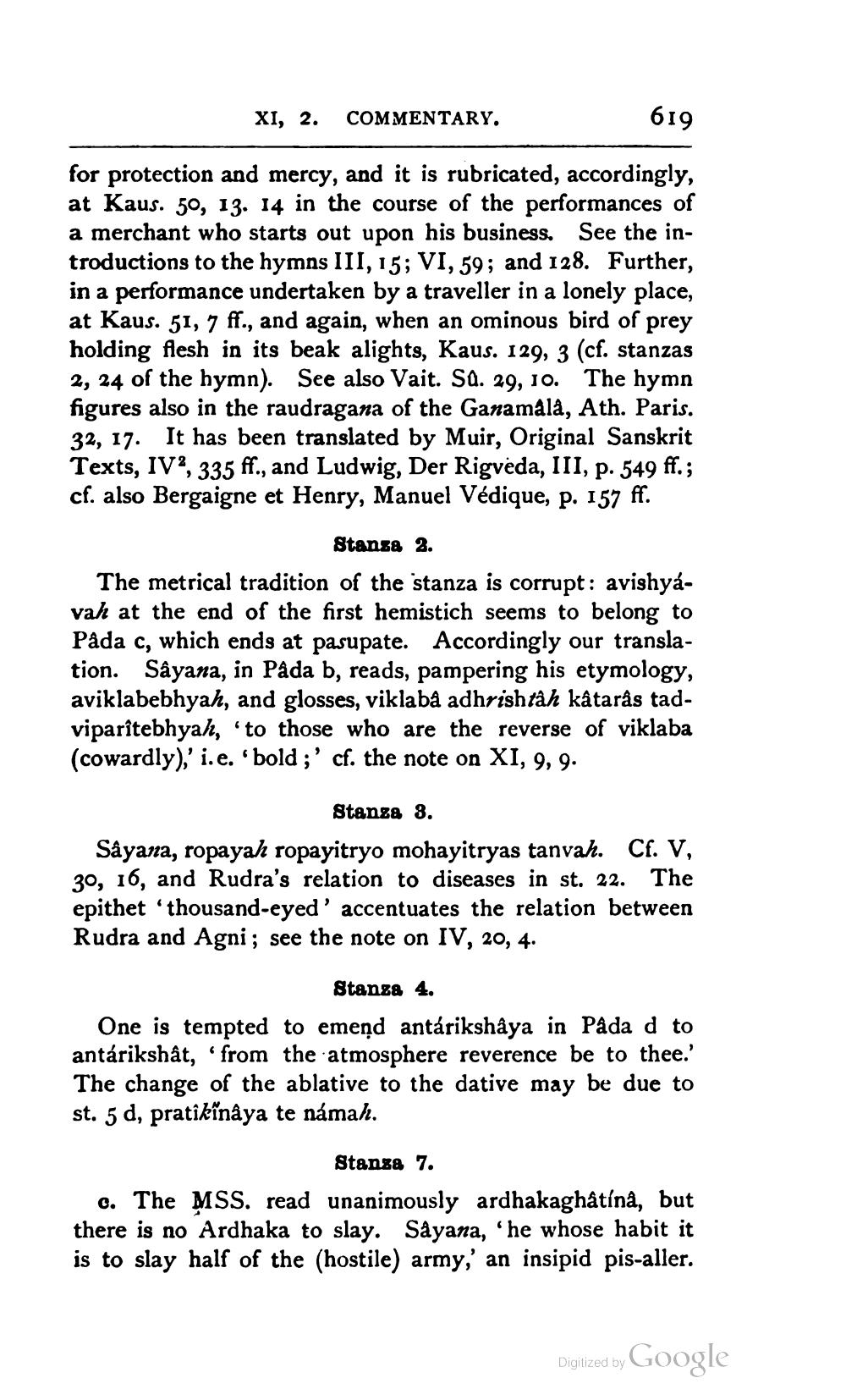________________
619
XI, 2. COMMENTARY.
for protection and mercy, and it is rubricated, accordingly, at Kaus. 50, 13. 14 in the course of the performances of a merchant who starts out upon his business. See the introductions to the hymns III, 15; VI, 59; and 128. Further, in a performance undertaken by a traveller in a lonely place, at Kaus. 51, 7 ff., and again, when an ominous bird of prey holding flesh in its beak alights, Kaus. 129, 3 (cf. stanzas 2, 24 of the hymn). See also Vait. Sû. 29, 10. The hymn figures also in the raudragana of the Ganamâlâ, Ath. Paris. 32, 17. It has been translated by Muir, Original Sanskrit Texts, IV2, 335 ff., and Ludwig, Der Rigveda, III, p. 549 ff.; cf. also Bergaigne et Henry, Manuel Védique, p. 157 ff.
Stanza 2.
The metrical tradition of the stanza is corrupt: avishyavah at the end of the first hemistich seems to belong to Pâda c, which ends at pasupate. Accordingly our translation. Sâyana, in Pâda b, reads, pampering his etymology, aviklabebhyah, and glosses, viklabâ adhrishtâh kâtarâs tadviparîtebhyah, 'to those who are the reverse of viklaba (cowardly),' i. e. 'bold;' cf. the note on XI, 9, 9.
Stanza 3.
Sâyana, ropayah ropayitryo mohayitryas tanvah. Cf. V, 30, 16, and Rudra's relation to diseases in st. 22. The epithet 'thousand-eyed' accentuates the relation between Rudra and Agni; see the note on IV, 20, 4.
Stanza 4.
One is tempted to emend antarikshâya in Pâda d to antarikshât, 'from the atmosphere reverence be to thee.' The change of the ablative to the dative may be due to st. 5 d, pratîkînâya te námah.
Stanza 7.
c. The MSS. read unanimously ardhakaghâtínâ, but there is no Ardhaka to slay. Sâyana, 'he whose habit it is to slay half of the (hostile) army,' an insipid pis-aller.
Digitized by Google




